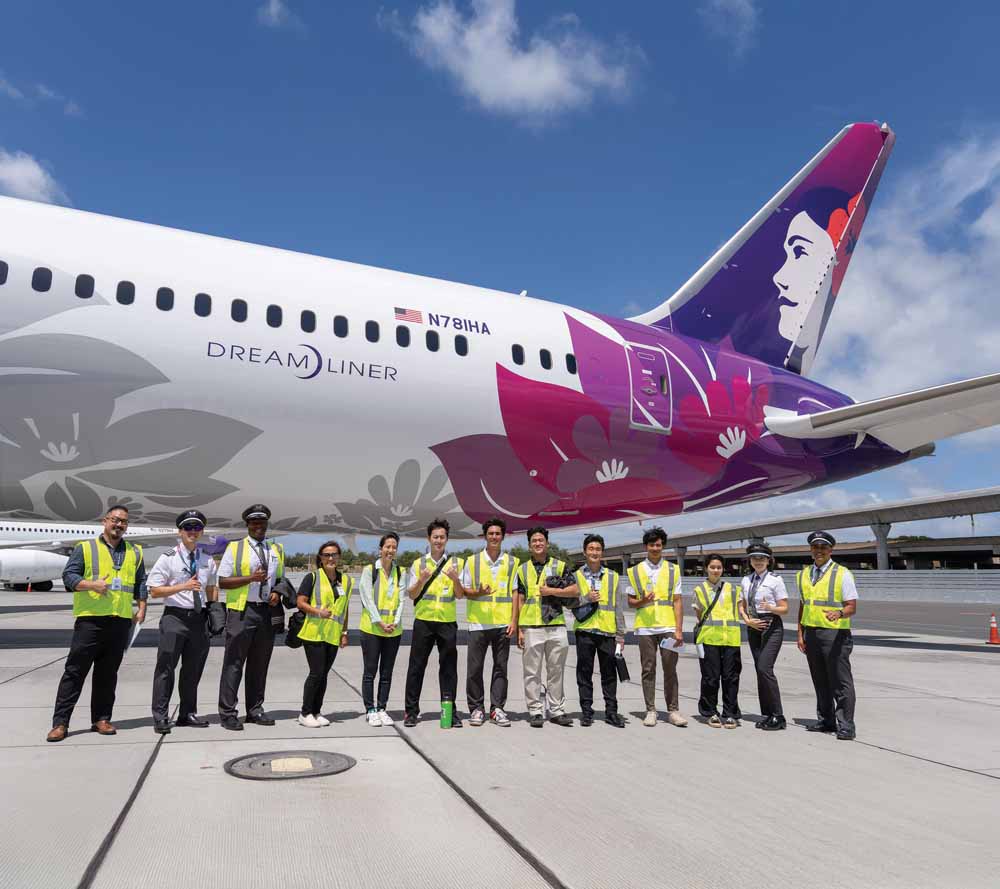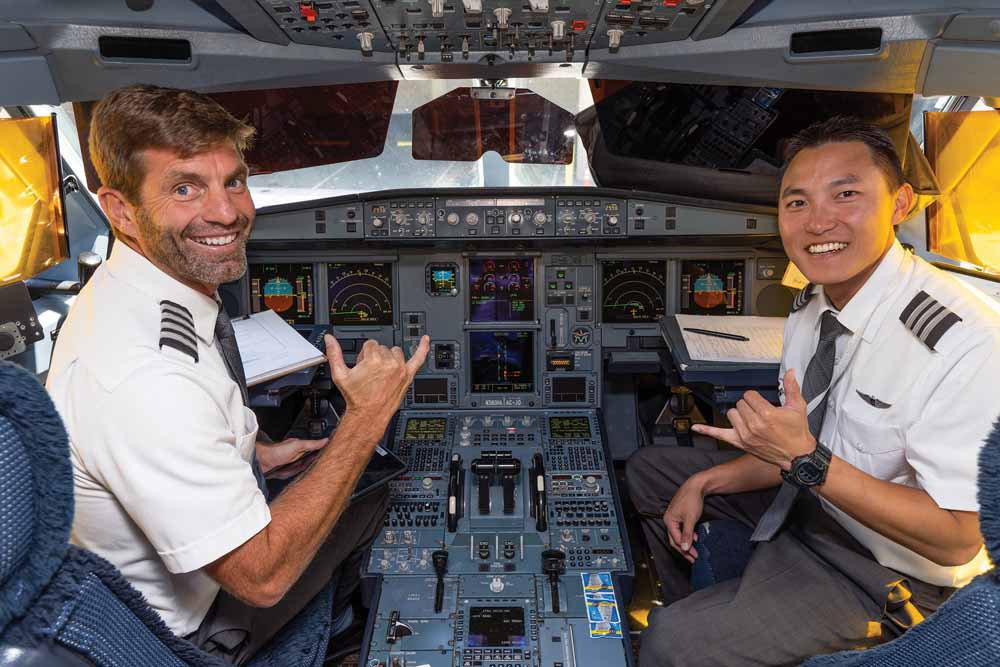Hawaiian

From left: Capt. Larry Payne, the Hawaiian Master Executive Council (MEC) chair; Capt. Jason Ambrosi, ALPA’s president; and Capt. Will McQuillen, the Alaska MEC chair, meet in Hawaii to discuss the proposed Alaska Airlines-Hawaiian Airlines merger. Photo: Brett Eckelberg
At A Glance
Pilots joined ALPA: 1948
Number of pilots: 1,138
Pilot bases: Honolulu, Hawaii, and Cincinnati, Ohio
Hubs/key markets: Honolulu, Kahului, and Maui, Hawaii, and Los Angeles, Calif.
Headquarters: Honolulu, Hawaii
Operations: The 10th-largest U.S. airline, Hawaiian offers nonstop service to Hawaii from 15 cities in North America and four cities in Japan, as well as Australia, New Zealand, South Korea, American Samoa, Tahiti, and the Cook Islands, as well as service to all four of Hawaii’s major islands.
Fleet: 62, including 18 A321neos, 24 A330-200s, 1 A330-300P2F, and 19 B-717-200s. On order: 12 B-787-9s and 9 A330-300P2Fs
For Hawaiian Airlines pilots, 2023 was a momentous year, culminating in a year-end announcement that could permanently change the history of ALPA’s third-oldest pilot group.
In just 12 months, the pilots achieved a new contract; supported relief efforts after devastating wildfires on the island of Maui; began a new freight operation with a Cincinnati, Ohio, base; celebrated their 75th anniversary with ALPA; and, in December, announced a proposed merger with Alaska Airlines.
Even before the announcement, Hawaiian was in a period of rapid change. It launched its new freight operation with Amazon in October 2023, with 10 A330Fs expected to join the fleet by the end of 2024. On the passenger side, Hawaiian continued expanding service to more mainland destinations, including starting nonstop service to Austin, Tex., in 2023, with service to Salt Lake City, Utah, set to begin this year. And in spring, the airline expects to receive the first of 12 B-787-9 Dreamliners.
The focus for 2024 will be the proposed merger with Alaska. Pending approval by shareholders and the federal government, Alaska Air Group would merge Alaska and Hawaiian Airlines in a transaction valued at $1.9 billion. The company has pledged to keep Hawaiian’s unique brand intact, preserving its cultural and economic significance to the state of Hawaii and its people.
The Hawaiian and Alaska Master Executive Councils (MEC), which already have a long history of collaboration, began working together immediately to begin the long process of merging the two pilot groups, including holding a joint MEC meeting in January. Pursuant to ALPA Merger policy, the two pilot groups will develop a strategic plan, establish a Joint Negotiating Committee, negotiate a joint collective bargaining agreement, craft a combined seniority list, and join separate governance bodies.
The entire process could take several years to complete. In the meantime, Hawaiian’s pilots will continue to do what they’ve done for the last 95 years: focus on safely and efficiently transporting their passengers to and from the Hawaiian islands.


